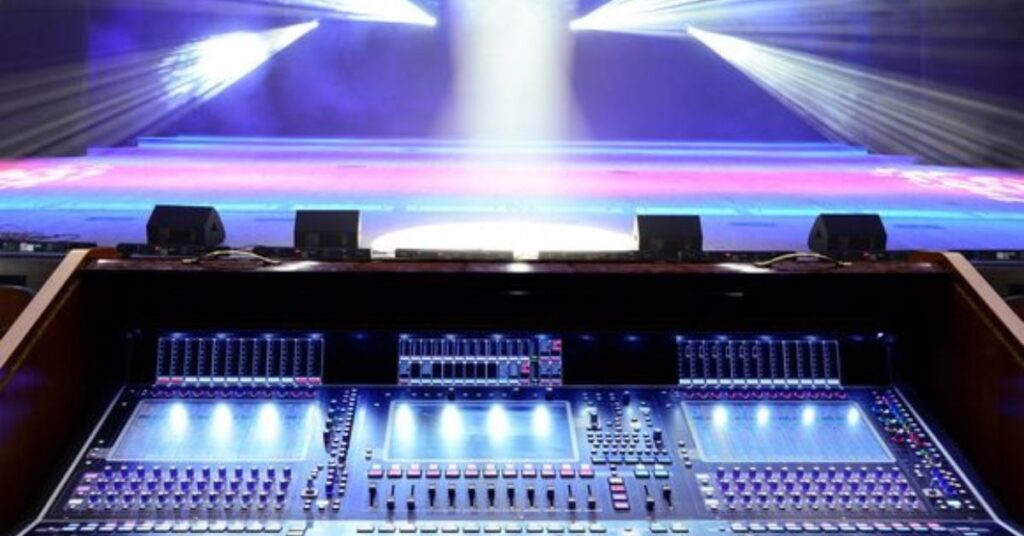When it comes to creating unforgettable presentations, smooth conferences, or dynamic live events, having the right audio visual equipment makes all the difference. This Audio Visual Equipment Guide: What’s Included In A Typical AV Setup? will help you understand every essential part of an AV system—what each piece does, how it fits together, and why investing in quality gear can completely transform communication and entertainment experiences. Whether you’re setting up a classroom in Texas, hosting a business event in New York, or running a church service in California, understanding your AV setup ensures everything runs without a hitch.
The power of an effective AV setup lies in how sound and visuals work together to capture attention, deliver clarity, and inspire engagement. From microphones and speakers to projectors and lighting, each component plays a unique role in making your message come alive. Let’s dive into the details and explore what makes a complete audio visual system both reliable and impressive.
What is AV equipment?
AV equipment stands for audio visual equipment, a combination of technology designed to transmit both sound and images for communication, entertainment, and collaboration. You’ll find AV setups in classrooms, corporate meeting rooms, event venues, restaurants, churches, and even home theaters across the United States. The goal is simple—deliver clear sound and crisp visuals that enhance how people connect and share information.
A typical AV setup includes audio devices like microphones, speakers, and amplifiers, alongside visual components such as projectors, LED screens, or digital displays. Together, these tools create a fully immersive experience that turns a regular event into something memorable. For example, schools often use interactive smartboards with built-in sound systems, while corporate offices rely on video conferencing setups equipped with noise-cancelling microphones and HD cameras.
Think of AV equipment as the nervous system of communication spaces—it connects and synchronizes every element, ensuring that no sound is lost and every image is crystal clear. In fact, according to AVIXA (the Audiovisual and Integrated Experience Association), the global AV market continues to expand in the U.S., especially in hybrid workplaces where clear communication is crucial.
See What Cynergy Can Do For You
When it comes to high-quality audio visual solutions in the USA, Cynergy Technology stands out as a trusted partner for both businesses and individuals. As discussed in this Audio Visual Equipment Guide, Cynergy specializes in designing, installing, and maintaining advanced AV systems tailored to each client’s unique environment. From small conference rooms to massive corporate auditoriums, their skilled technicians ensure every microphone, speaker, and projector works together in perfect harmony.
Cynergy Technology doesn’t just sell equipment—it delivers full-scale AV integration services. This includes everything from planning the system layout to training teams on efficient usage. A recent case study from a Texas-based company shows how Cynergy transformed a dull meeting room into a high-tech collaboration hub featuring wireless microphones, ceiling-mounted speakers, and a laser projector that produced bright, distortion-free visuals.
What truly sets Cynergy Technology apart is its commitment to long-term reliability. The company offers ongoing maintenance contracts and technical support, ensuring every piece of AV equipment remains updated and performing at its best. By focusing on premium U.S.-standard products, Cynergy delivers top-tier performance that minimizes downtime and eliminates the constant need for repairs or replacements.
Microphones
No AV setup is complete without high-quality microphones. These devices capture sound at the source, ensuring your voice is heard clearly by every listener in the room or online. The type of microphone you choose depends on your setup. Handheld microphones are ideal for live events and public speaking, while lapel mics are perfect for presenters who need to move around freely. Conference microphones, on the other hand, are designed for boardrooms and team meetings, where clarity and noise reduction matter most.
The right microphone setup can drastically improve audience engagement. For instance, a wireless microphone gives a presenter freedom to move naturally without worrying about tangled cables. In contrast, a wired microphone ensures a consistent signal for events where reliability is critical.
Here’s a quick look at the most common microphone types:
| Type | Ideal Use | Key Benefit |
| Handheld | Stage events and public speaking | Durable and powerful sound pickup |
| Lavalier (Lapel) | Presentations and video shoots | Hands-free mobility |
| Conference | Meetings and discussions | Clear voice capture and noise reduction |
| Wireless | Live performances | Freedom of movement |
Speakers
Speakers are the voice of your entire audio visual equipment setup, and as highlighted in this Audio Visual Equipment Guide, they play a crucial role in how sound travels through any environment. They project audio evenly across the space, ensuring everyone enjoys the same clarity and depth no matter where they sit. In the U.S., most businesses and event organizers prefer ceiling-mounted or wall-mounted speakers because they save space while providing balanced coverage. Portable speakers are equally popular for outdoor events and temporary installations where flexibility matters most.
A powerful speaker system combines clarity, strength, and intelligent placement. For instance, a conference room might feature discreet ceiling speakers that blend seamlessly into the design, while a large auditorium would rely on floor-standing units designed to fill every corner with rich, consistent sound. The secret to professional-grade audio lies in achieving the right balance—too much bass or treble can distort the experience, while well-calibrated speakers deliver a natural, lifelike tone.
Each type of speaker serves a unique purpose, and its performance depends heavily on room size, materials, and acoustics. Choosing speakers that match your amplifier’s power output and the room’s acoustic profile ensures distortion-free sound and a polished final result that enhances every presentation or event.
Projectors and screens
Projectors and screens are at the heart of any visual presentation setup. They transform digital content into large-scale visuals that everyone can see. The most common types used in American venues include LCD, DLP, and laser projectors. LCD projectors are known for sharp color contrast, DLP models deliver smooth motion for videos, and laser projectors offer outstanding brightness and durability.
Choosing the right screen is just as important. Matte white screens are great for controlled lighting environments, while high-gain screens work best in brightly lit rooms. Screen size should match the room dimensions, ensuring viewers can comfortably see details without straining their eyes.
Below is a simple comparison of projector types:
| Projector Type | Best For | Key Feature |
| LCD | Classrooms and offices | Sharp and vivid color quality |
| DLP | Corporate meetings | Smooth video motion |
| Laser | Large events | High brightness and long lifespan |
A well-chosen projector and screen combination can turn any presentation into a visually engaging experience, making it a vital part of any Audio Visual Equipment Guide: What’s Included In A Typical AV Setup?
Lighting
Good lighting can make or break your presentation. It enhances visibility, sets the mood, and ensures cameras capture clear footage. Modern AV setups in the U.S. often include LED panels, spotlights, and ambient lighting that adapt to different environments. For example, soft lighting works well for seminars, while vibrant colored lighting enhances concerts and live shows.
Lighting isn’t just about brightness—it’s about balance. Too much light can wash out visuals, while poor lighting can make everything look dull. Professionals often use a mix of warm and cool tones to create depth and focus attention on the stage or screen. Investing in programmable lighting systems gives you complete control over ambiance and timing, ensuring every event feels polished and professional.
Cables and adapters
Behind every great AV system lies a web of cables and adapters connecting everything seamlessly. As highlighted in this Audio Visual Equipment Guide, these components are the backbone of any professional setup, ensuring smooth communication between microphones, projectors, speakers, and control systems. Common cable types include HDMI for high-definition video and audio, XLR for professional microphones, RCA for older setups, and DisplayPort for advanced monitors. USB-C and power cables round out the essentials, keeping all devices connected and powered throughout your event. Proper cable management not only keeps your workspace organized but also prevents signal interference. Labeling cables, using cable ties, and testing connections regularly can help avoid costly disruptions. Always remember that even the most advanced microphone won’t perform well if your cables are low-quality or damaged.
Cynergy Technology AV Equipment Services
Cynergy Technology provides a full range of AV equipment services for businesses, schools, and event planners across the USA. Their team focuses on creating integrated systems that combine microphones, speakers, projectors and screens, and lighting into a cohesive setup that works flawlessly. What makes them different is their dedication to customization—each project is designed around the client’s exact needs, from boardroom audio systems to large-scale event installations.
Cynergy also offers long-term maintenance and consultation services. They help clients upgrade outdated systems, improve energy efficiency, and train staff to manage the equipment confidently. Their solutions are built using top-tier products from trusted U.S. brands, ensuring reliability and superior performance. As one client from Dallas said, “Cynergy turned our basic meeting room into a modern collaboration space that feels like Silicon Valley.”
May Also Read: Technology: The Good The Bad The Ugly – A Deep Dive into Our Digital World
Conclusion
Building a powerful audio visual setup is more than just connecting wires—it’s about crafting an experience where sound, sight, and emotion work in harmony. This Audio Visual Equipment Guide: What’s Included In A Typical AV Setup? shows that each element, from microphones to lighting, plays a crucial role in ensuring every message lands with impact.
For businesses and individuals in the U.S. who value quality and precision, Cynergy Technology AV Equipment Services remain a trusted choice. Whether you’re upgrading an office, planning an event, or modernizing a classroom, investing in the right AV setup ensures your audience doesn’t just hear your message—they feel it.

Jake Miller is a mobile troubleshooting specialist with 7+ years of experience solving Android and app-related issues. He tests every fix on real devices to ensure accuracy and reliability. Jake creates simple, step-by-step guides to help users quickly resolve everyday smartphone problems.



